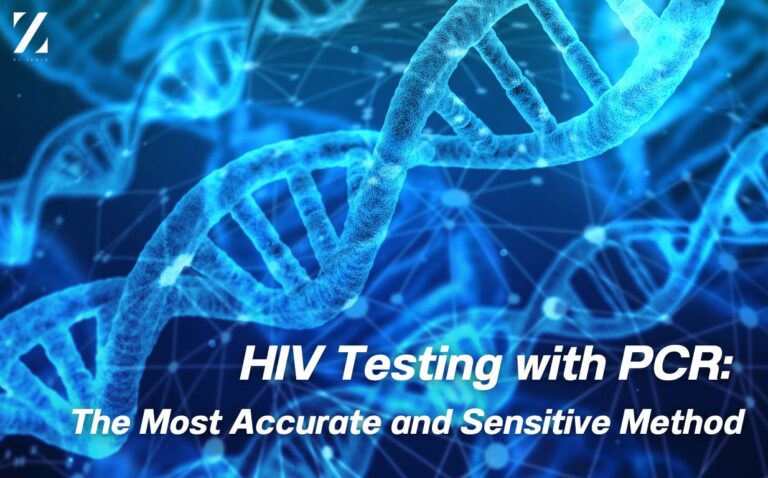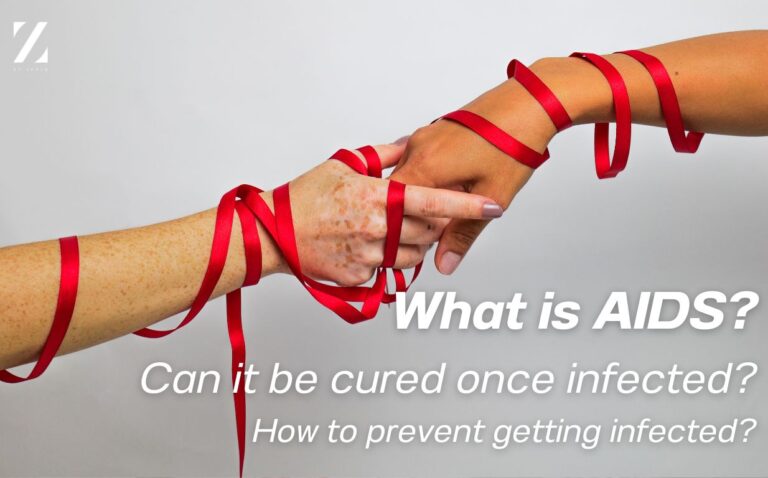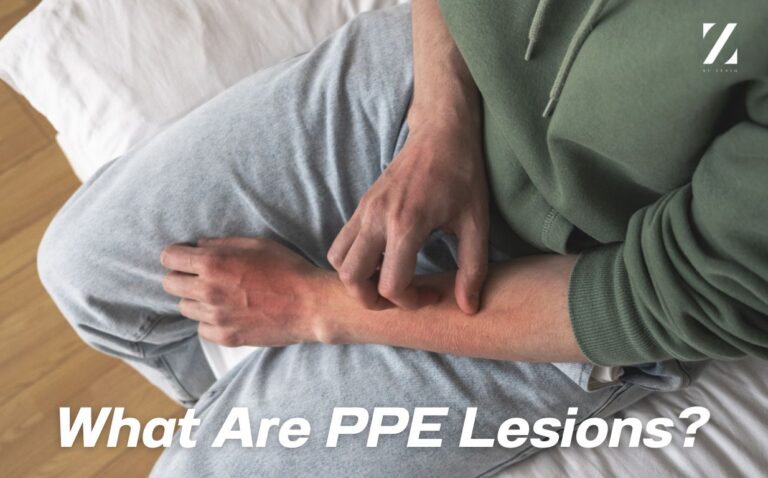HIV should no longer be feared or cause individuals to be ostracized from society, as it can now be effectively managed with treatment. However, skin lesions or rashes caused by HIV continue to be a concern for many patients, both due to physical discomfort and the stigma from others.
What Are HIV Skin Lesions and What Do They Look Like?
HIV-related skin lesions or rashes can appear in different parts of the body, depending on the type and underlying cause. These include:
- Pruritic Papular Eruption (PPE):
Small, intensely itchy bumps, typically found on the arms, legs, back, and torso. - Herpes Zoster (Shingles):
Blister-like lesions that follow the nerve pathways, often on the chest, back, or face. - Kaposi’s Sarcoma:
Purple-red or dark brown lesions, commonly found on the face, arms, legs, or the roof of the mouth. - Drug Rash:
Red rashes may occur across the body due to HIV medications or certain antibiotics.
Are HIV Lesions the Same as PPE Lesions?
HIV-related lesions and PPE (Pruritic Papular Eruption) are related in that PPE is one of the common skin manifestations in HIV patients. However, not all lesions in HIV patients are PPE, and their appearance can vary depending on the cause or other factors.
Where Can HIV Lesions Appear?
HIV lesions can appear in various areas of the body. Common locations depend on the type of lesion or rash and the immune system status of the patient.
Common Locations of HIV Lesions:
- Face and Scalp:
- Seborrheic Dermatitis (inflammatory skin disease) lesions or Kaposi’s Sarcoma.
- Torso and Back:
- Pruritic Papular Eruption (PPE): Itchy bumps commonly found on the back and torso.
- Drug rashes or immune response-related rashes.
- Arms and Legs:
- Raised bumps from PPE, often found on the arms and legs.
- Red or itchy rashes due to drug allergies.
- Palms and Soles:
- Syphilis Rash: Common in HIV patients with syphilis.
- Drug rashes may also affect the palms and soles.
- Mouth and Lips:
- Kaposi’s Sarcoma: Purple-red lesions on the roof of the mouth.
- Mouth ulcers or white rashes from fungal infections (e.g., Candida).
- Genital and Anorectal Area:
- Herpes Simplex Virus (HSV) lesions.
- Ulcers or rashes from sexually transmitted infections such as syphilis or HPV.
What Are the Stages of HIV Lesions?
HIV lesions can appear at different stages of HIV infection, with symptoms relating to the patient’s immune function and stage of the disease:
- Acute HIV Infection (Initial Phase):
- Occurs 2-4 weeks after HIV exposure.
- Skin rashes often include red patches or small bumps, typically on the chest, back, and torso, along with fever, sore throat, and muscle aches.
- Chronic HIV Infection (Latent Phase):
- At this stage, the virus has not yet severely weakened the immune system. Skin problems may begin to appear, such as:
- Pruritic Papular Eruption (PPE): Itchy bumps on arms, legs, and back.
- Seborrheic Dermatitis: Red, flaky, oily rash, often on the face and scalp.
- At this stage, the virus has not yet severely weakened the immune system. Skin problems may begin to appear, such as:
- Advanced Immune Deficiency (AIDS):
- When the immune system is severely weakened (CD4 count below 200), more severe skin issues and opportunistic infections occur, including:
- Kaposi’s Sarcoma: Purple-red or dark brown lesions on the skin or inside the mouth.
- Herpes Zoster (Shingles): Blisters along nerve pathways.
- Fungal or bacterial infections: Pustules, boils, or rashes caused by fungi.
- When the immune system is severely weakened (CD4 count below 200), more severe skin issues and opportunistic infections occur, including:
What Do HIV Skin Lesions Feel Like?
HIV-related skin lesions can vary in symptoms depending on the type and stage of infection. Common sensations include:
- Itching: Particularly with Pruritic Papular Eruption (PPE) and Seborrheic Dermatitis.
- Pain: Often seen with Herpes Zoster (Shingles) and Kaposi’s Sarcoma.
- Irritation: May occur in drug rashes or infections.
How Are HIV Lesions Diagnosed?
The diagnosis of skin lesions in HIV patients involves a variety of methods based on the appearance and symptoms of the lesions:
- Blood Tests:
- HIV Test: The primary method for diagnosing HIV, using HIV Rapid Test (antigen/antibody tests) or HIV PCR Test to detect early infection.
- CD4 Count: Measures immune function and the stage of HIV.
- Viral Load: Measures the amount of virus in the blood.
- Skin Biopsy:
- Used when the lesions cannot be easily identified. A skin sample is examined under a microscope to identify conditions such as Kaposi’s Sarcoma, Herpes Zoster, or fungal infections.
- Microbiological Tests:
- Used to identify bacterial or viral causes of skin lesions, such as Herpes Simplex Virus, Syphilis, or Tuberculosis.
- Imaging:
- In some cases, X-rays or ultrasound may be used to assess the spread of Kaposi’s Sarcoma or other conditions affecting internal organs.
- Drug Allergy Tests:
- Performed if a rash is suspected to be caused by HIV medications. Patch tests or blood tests may be used to identify drug sensitivities.
- Immunological Tests:
- CD4 count or Viral Load tests help assess the immune system and identify potential HIV-related infections.
Treatment and Care for HIV Lesions
HIV lesions can be treated and managed effectively with appropriate care:
- Antiretroviral Therapy (ART): Boosts immune function and reduces the occurrence of skin lesions and complications.
- Skin Care: Topical medications for itching and preventing secondary infections.
- Psychological Support: Counseling or support groups to boost confidence and mental well-being.
Comprehensive Care at Z by Zeniq
At Z by Zeniq, we offer comprehensive care for HIV and other sexually transmitted infections, with a focus on creating a supportive and understanding community:
- Accurate diagnosis
- Antiretroviral treatment and skin care
- Psychological counseling and self-care advice
Summary
Understanding HIV-related skin lesions can help patients manage symptoms more effectively. Modern HIV treatments can reduce the occurrence of skin issues and significantly improve quality of life. While HIV lesions may cause discomfort, appropriate care can alleviate symptoms and allow for better management. At Z by Zeniq, we are committed to providing comprehensive services to HIV patients, ensuring they receive equal, respectful, and empathetic care.
If you or someone you know needs advice or care related to HIV and sexually transmitted infections, contact us at Z by Zeniq. We are here to provide full, equitable care.




